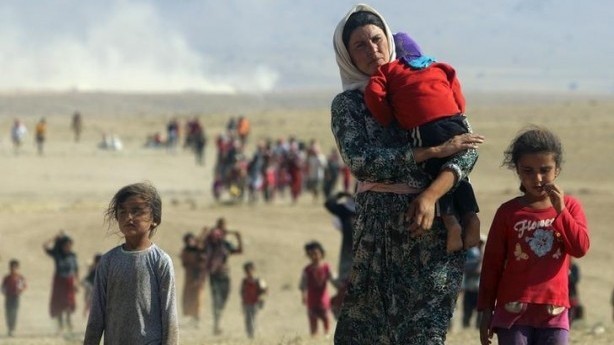Despite campaigns against the so-called Islamic State (IS), Syria has made important progress but, there are still unpredictable risks.
The initiative to organise a trilateral meeting of the US, Russia and Israel to discuss regional security issues was raised in the context that the Russian-assisted Syrian government army is conducting campaigns to defeat the IS in the northwest region of the Middle Eastern country. Conflicts continued to escalate with the risk of a serious humanitarian crisis in Syria. Clashes between government forces and rebels have continued to escalate in Idlib since the end of April, forcing more than 285 deaths and over 200,000 people to flee their homes.
Meanwhile, Israeli air strikes aimed at Iranian targets and Hezobllah forces within Syria were tantamount to “adding fuel to the fire” to the heated civil war in Syria. Israeli air strikes escalated tensions and jeopardised the Russian air force on anti-terrorism missions in Syria.
After the US had declared to win the war launched by Washington against the IS since 2014 and pulled all its troops out of Syria, the war against the IS entered into a new period. Although this extremist organisation failed to fulfil its dream of establishing a “Muslim Kingdom” in the territories of Iraq and Syria, the IS has not completely been wiped out. The IS shrank in size and changed its mode of operation in the form of small groups. The threat from this terrorist organisation still exists. In fact, the US is still continuing to lead air strikes conducted by the coalition allies against the IS in Syria.
Regional media reported that the Pentagon was still silently transferring its weapons to the Middle East to serve the campaign to chase out the IS fighters. The type of US missiles secretly brought to Syria are improved versions of the Hellfire missile, designed to hit targets such as cars, tall buildings and other infrastructures. The US Central Command (CENTCOM) announced that the US-led coalition against IS in Iraq and Syria was in a state of readiness to fight. Accordingly, the Special Operation Joint Task Force (OIR) is staying on high alert and continuing to closely monitor potential threats to US forces in the region.
The fact that the US withdrew from Syria but are still secretly bringing weapons to the region, at the same time continuing to lead the war against IS here, shows that Washington has still been concerned about the risks from the extremist organisation for the benefits the US. The US officials and troops have been deployed in the neighbouring country Iraq to protect US interests that are still insecure, as the IS dangerous seeds are still hidden in many places. The US’ coordination with Russia to find solutions to the Syrian crisis also aims to enhance efficiency in the fight against the IS, while help the US continue to maintain its influence in the Middle East.
US Secretary of State M. Pompeo has recently met with Russian President V. Putin in Sochi to discuss plans to allow the Syrian Government to move back into the international community after the implementation of UN Resolution 2254. The resolution called on Syria to conduct peace negotiations, draft a new Constitution and hold elections under the UN supervision. According to US special representative for Syria engagement J. Jeffrey, the US and Russia had negotiated the possibility of removing Syria from the current international isolation situation, if Damascus agreed to certain conditions, in which there were to be a ceasefire agreement in the province of Idlib.
Washington and Moscow are seeking a step-by-step approach to end the eight-year war in Syria. However, this requires both sides to make difficult decisions because the US and Russia have supported two different sides of the conflict in Syria and neither of them wants to admit defeat. The US’ wish to work with Russia to find a solution to the crisis also comes from developments in the field, as the balance of power is leaning towards the Syrian government forces backed by Russia.
UN Special Envoy for Syria Geir Pederse reiterated the UN’s principle of supporting a political solution to end the conflict in Syria. According to the UN, the international community needs to promote the healing of divisions and start building trust, because there is no peace perspective for a deeply divided Syria and a crisis of trust. The coordination between the parties to find a political solution is the only suitable option to be able to deal with security threats, solve the humanitarian problems and open the door for peace for Syria.
















